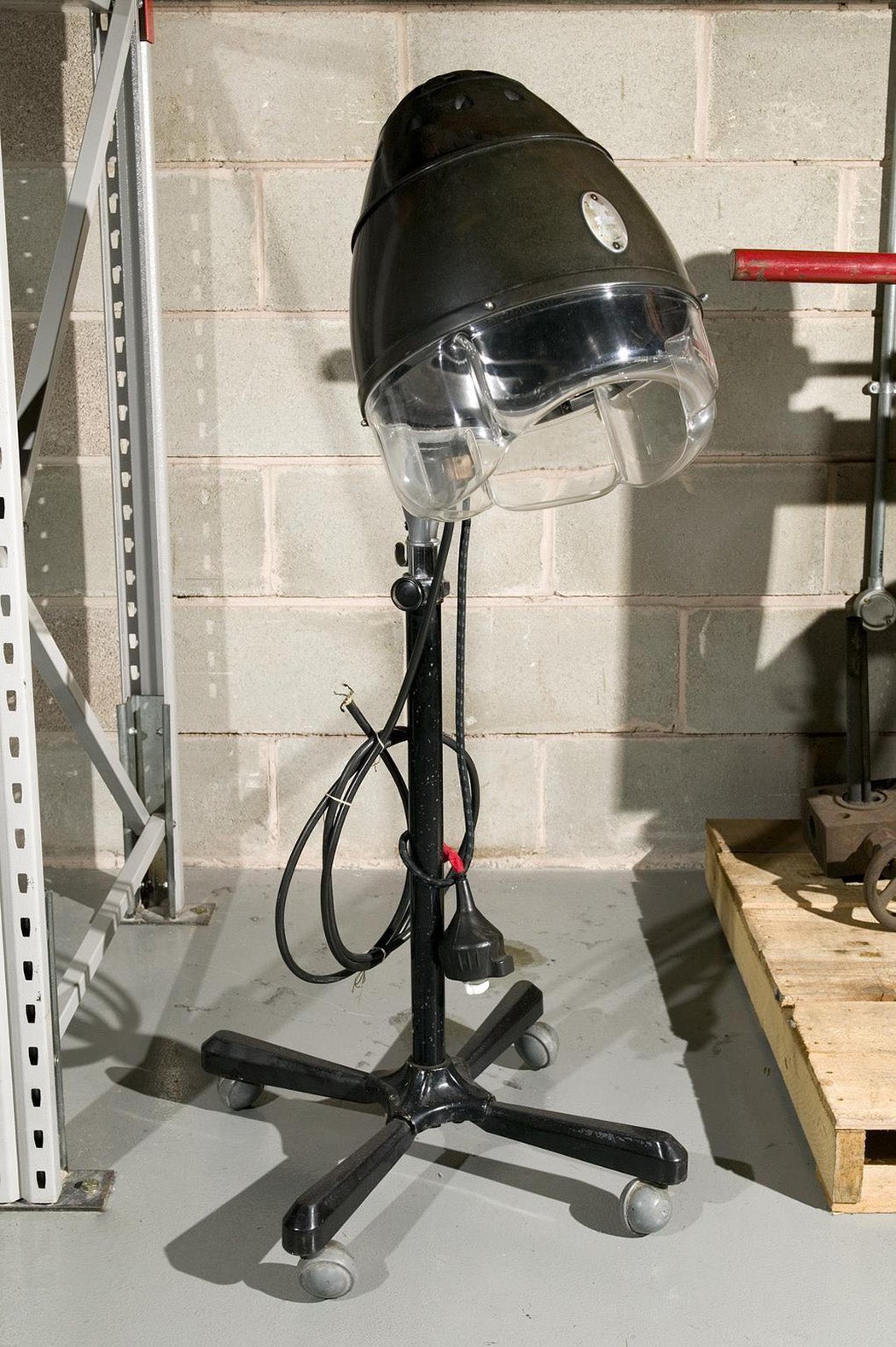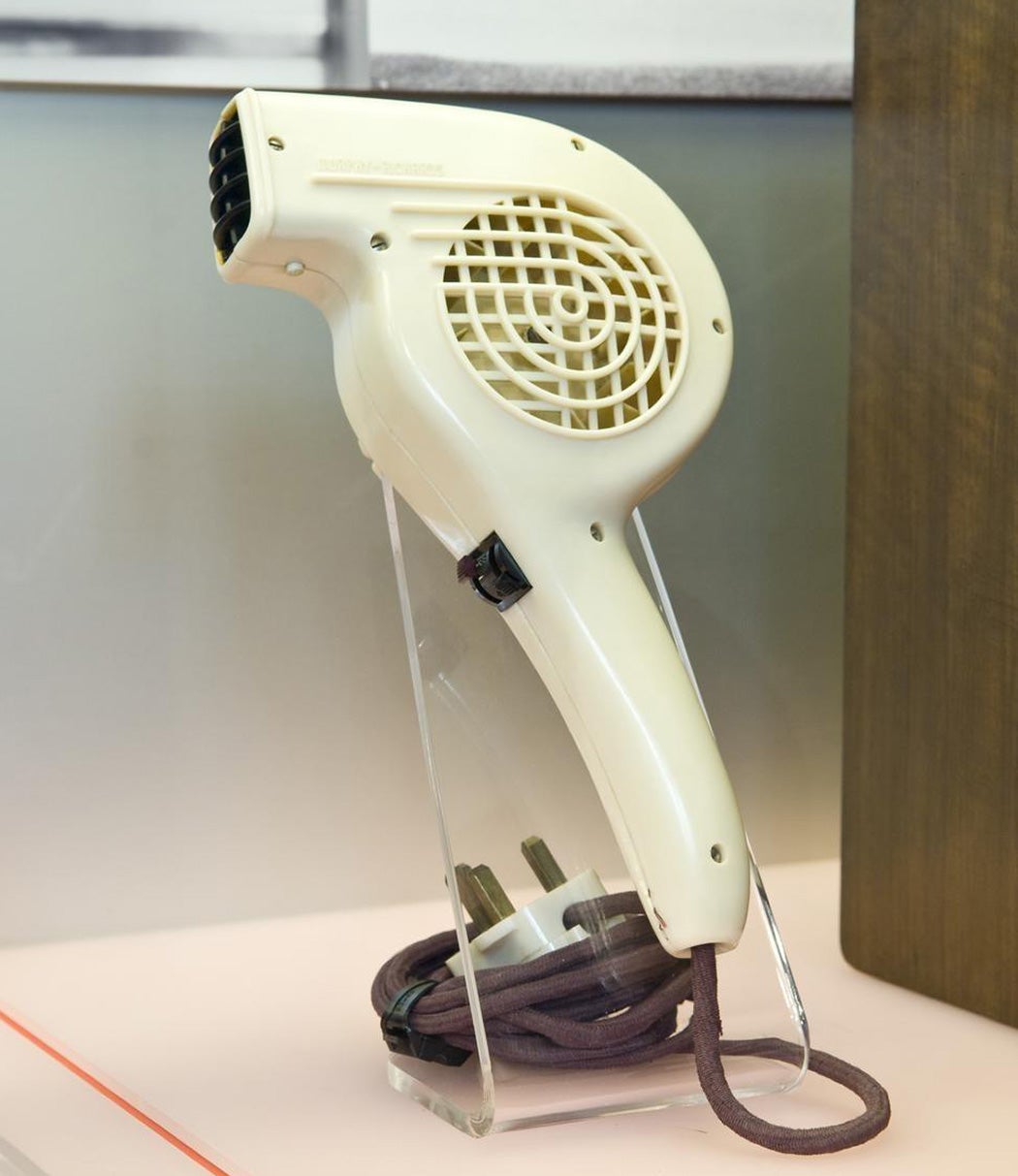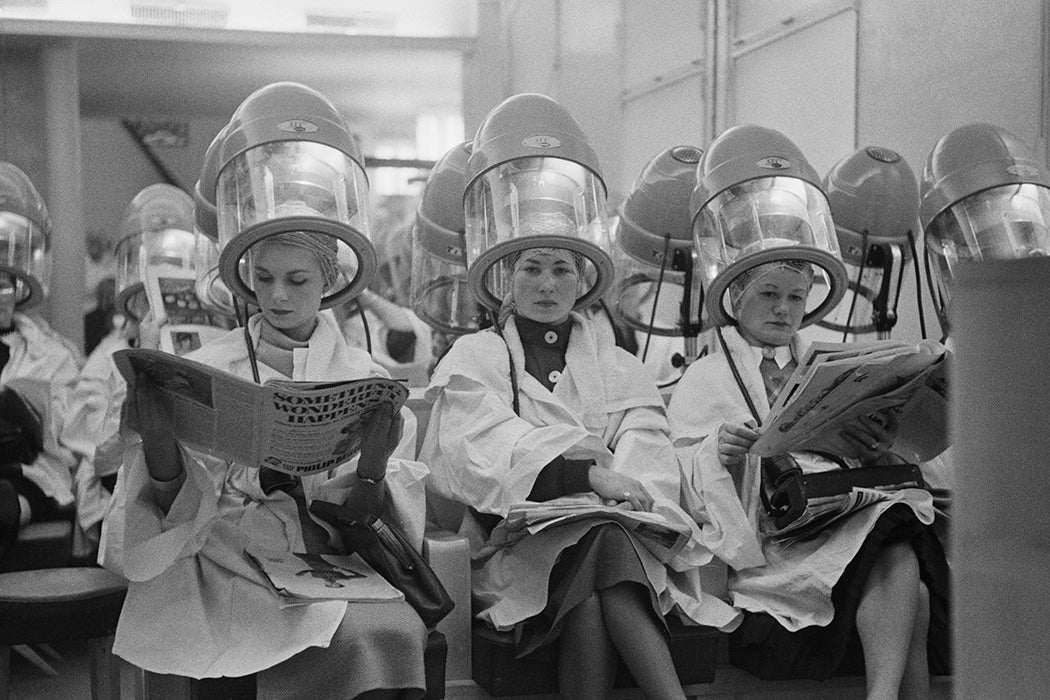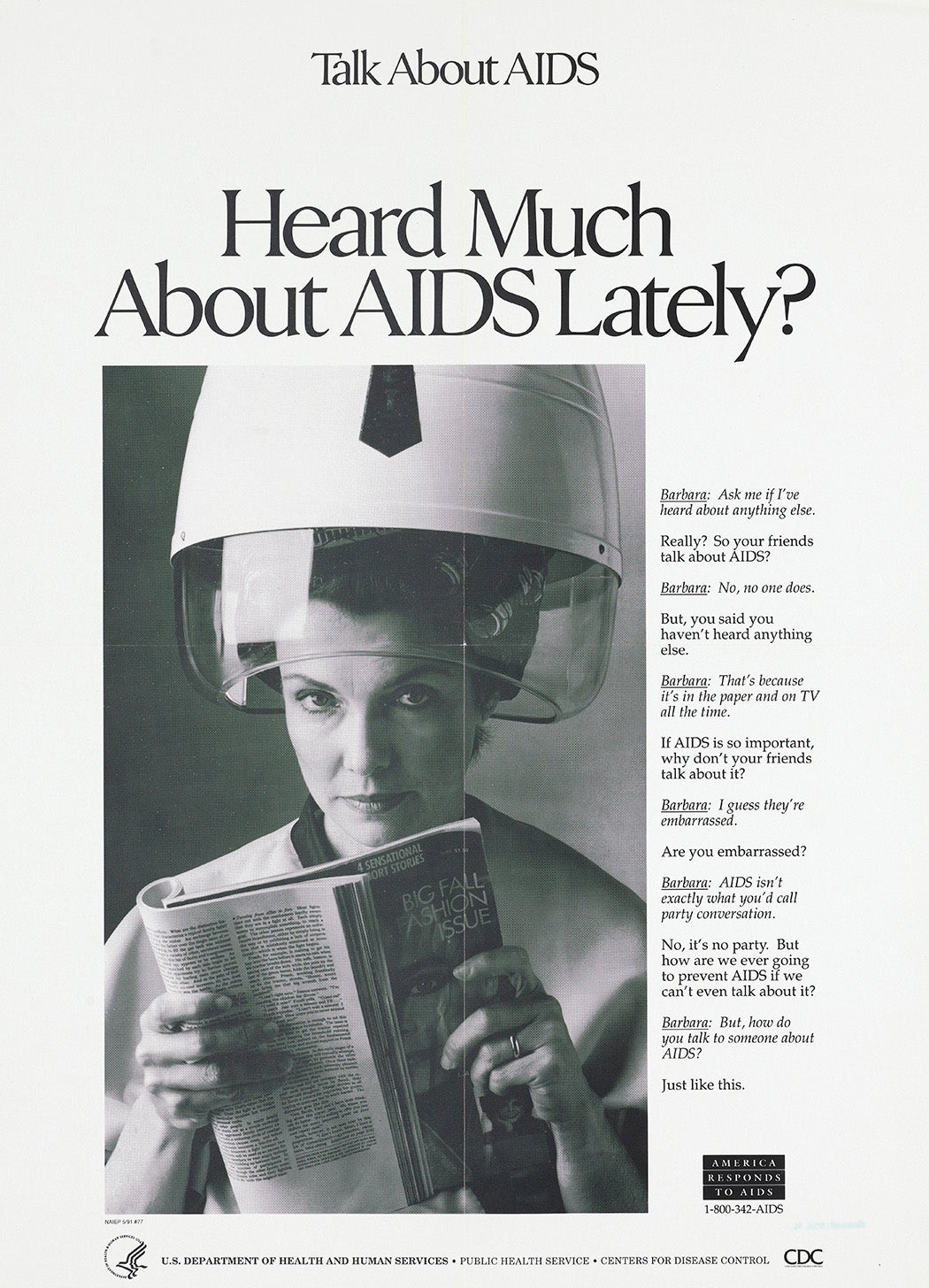The beauty salon is a standard feature of most strip malls and shopping centers. It’s a business that depends on return customers, and hairstyles (like manicures) require upkeep, so salons—and particular stylists—develop a community of regulars. Salons also serve a social role. As Gender and Women’s Studies scholar Jennifer Scanlon writes, “Beauty shops grew in number and prestige after the turn of the twentieth century, so that by the end of World War I hairdressing had become a middle-class, respectable occupation for [B]lack and white women across the United States.”
Salons provided an economic avenue for female entrepreneurs, and their emergence in commercial spaces (beyond private homes) meant that—like department stores—they created another public space for women to participate in society, and at a more intimate level. They remain a uniquely public/private space—a shopfront open to anyone, yet a space for otherwise private grooming—and private conversations.
Scanlon describes salons as a places that women “get their hair done and let their hair down.” The salon was coded as a place for conversations to take place.

Most emblematic of the salon space was—is—the hood dryer. You may have sat under one, with curlers in your hair, getting a style ready for a special occasion. The first stationary dryer was invented in the late nineteenth century, but they became common in the interwar period, like the example above from 1932, which looks very similar to those in use today.
Hood dryers are now ubiquitous and so strongly signify the hair salon and its social space that the Centers for Disease Control could use an image of a woman under a hood dryer to illustrate a poster encouraging people to talk about HIV in the 1980s.
Though the hood dryer holds sway in the cozy commercial domain, handheld hair dryers have been available since the the 1920s. Increased home electrification brought a boom in appliances, and women’s shorter hairstyles benefited from blow drying. A home dryer also allows someone to maintain the style created in the salon. Few people purchase the hood dryer for home use (though they are marketed as such); most consumers go with the smaller, handheld models.

Now manufacturers assume hairdryers are in every household, and they’ve been found to be useful for everything from drying clothes to applying window insulation. Their familiarity means it’s easy to forget how revolutionary they once were. Something that represented a change in women’s lifestyles, and a shift in consumer culture, has become a standard part of household equipment, so much so that even when we travel, we expect to find a hairdryer in the hotel room. And, surprisingly, it looks a lot like the ones our great-grandmothers would have used.








